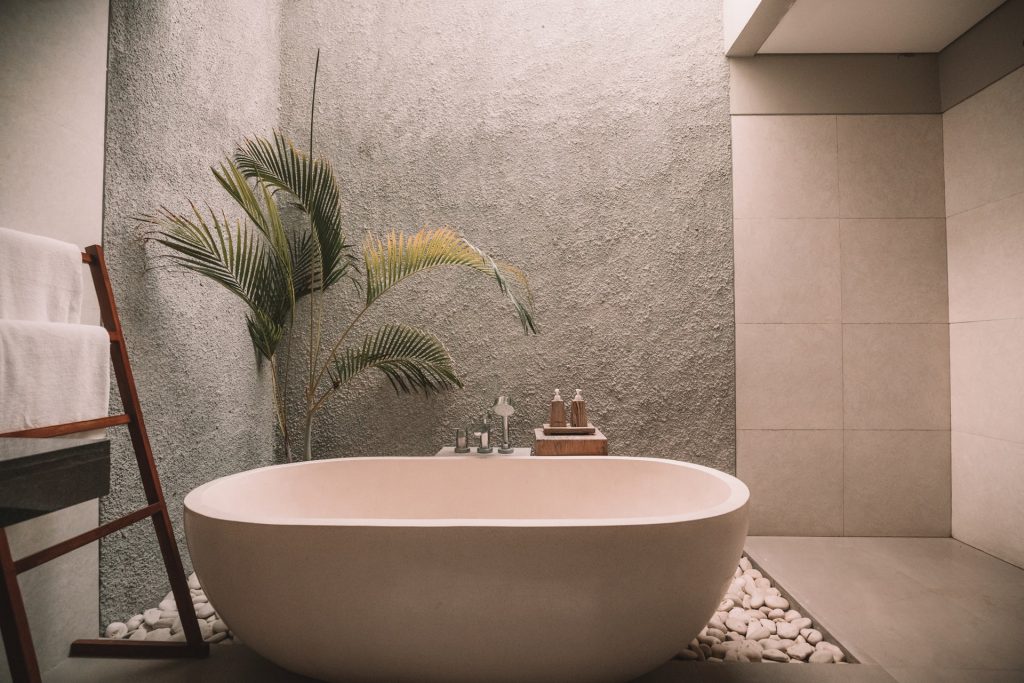TRANSFORMING LUXURY RESIDENTIAL SPACES: VIEWS FROM AN INTERIOR DESIGNER AND A FLORAL DESIGNER
At a time where the immediate space around us is getting more and more attention, we wanted to turn to some of the wonderful people we work with to showcase the approach we would take together in transforming spaces in prime properties. Philippa Somerset put the questions to Matteo Bianchi, Interior Designer and Elizabeth Marsh, floral designer – both of which know how to spread a little magic in their work!
How can you use architectural indoor planting to enrich the design of luxury residential spaces?
MB: Architectural indoor planting enriches design, connects us to nature and brings the outside in. At the beginning of the creative process, plants should be thought of as an intrinsic part of the design scheme in the same way as colours or lighting are considered. In other words, plants can be viewed as being fundamental to the overall aesthetics of a particular space.
Ask yourself some questions. For example, how will soft finishes fit around the natural elements of a design? What sort of scale/proportions are we looking for when we add plants to a design scheme?
EM: If the lockdown has done nothing else, it has taught many a valuable lesson in the healing power of nature, especially those who struggle against mental resilience. I would like to believe that, as we go back to ‘normal life’, we will continue to notice and appreciate the healing and restorative power of flowers and plants. Certainly, creative plant installations can be equally as inspiring as flower arrangements, art and sculpture.
Clever use of colour, shape and form can embellish a design or space, adding to its beauty and highlighting its features rather than detracting from them. The important thing is for the floral designer and the interior designer to connect and explore together what is really needed for the space, making sure that the finished result works in harmony with the space and can thrive.

What are the current trends or shining examples in the use of indoor plants in luxury properties?
EM: One of my great pleasures is to install large, statement trees in luxury properties. There is a natural grace in these specimens that comes with their, sometimes, stately age… a personality that develops over time similar to the ways in which people mature with time.
Ficus trees (commonly known as fig trees) are particularly attractive with their many different species, leaf formations and growth patterns that seem to suit every possible location. However, for sheer elegance, the standard ficus tree is hard to beat. Whilst its clean stem allows an unhindered view of the space it occupies, the canopy extends above our heads shielding us from a harsh light so encouraging us to look skywards.
Another advantage of the ficus tree is that it emphasises the height of a ceiling, giving perspective and focus to a design feature which might otherwise be overlooked. However, buildings don’t have to be the size of palaces in order to incorporate planting structures that create havens where people can work, rest and play.. The ‘Vertical Forest’ in Milan is an example of a block of flats that, but for its vertical planting, would otherwise appear boring’.
The shape is not extraordinary, nor the height, nor the material it is made from. However, it has incorporated within its structure, space for trees and large- scale plants to grow around its framework transforming it into something extraordinary and making the surrounding buildings appear barren and soulless by comparison.
It is my belief that, increasingly, buildings will be designed to incorporate plants and greenery, which soften and mould them into the surrounding landscape.
MB: Simplicity is a key trend and the requirement for minimal and low maintenance plants. Another, alternative trend lies in people’s search for cosiness as they spend more time at home. Currently, home can be the only space where a person feels safe and where it expresses their personality. As opposed to a minimalist approach, having lots of favourite plants around the home helps us to feel more in tune with nature.
Additionally, we are now more open to playfulness; sometimes we want to revisit our childhood memories and remember things that help to make us smile: terrariums, for example, will help with this instinctive need to create and play around with natural materials.
To what extent do you consider indoor planting to be an important tool for aiding contemporary interior design for prime residential properties?
MB: To a large extent. More and more owners of prime residential properties appreciate the health benefits and sense of well-being that plants bring to their home environment, so-much-so that incorporating planting schemes becomes fundamental to an interior designer’s scheme.
EM: Finally, we appear to have reached the end of the era of bland, blank buildings, devoid of any contact with the natural world. Global warming, conservation crisis after crisis and a depleted diversity of species throughout the planet seem to be reaching our consciousness and, at long last, we are reconnecting ourselves with nature.
Those working from home have embraced planting, gardening and even cut flowers as never before in an attempt to keep themselves resilient and engaged with their world. As such, planting is becoming an expected entity in any interior design scheme and, when well done, can enhance it beautifully. The key to this is to make sure the plants are well suited to their environment and have everything they need to thrive.
Some wonderful tips from the experts and if you would like to transform your space at home, then please get in touch with us on 020 3457 2857 or at info@somersetestates.com

